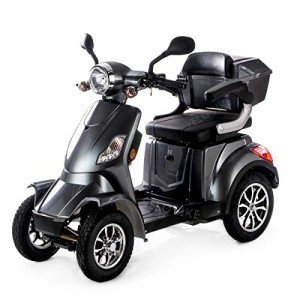A Comprehensive Guide to Buying a Mobility Scooter
Mobility scooters have actually become an important tool for numerous individuals looking to improve their independence and mobility. With a huge variety of models and features available, selecting the right mobility scooter can be daunting. This post provides an informative guide to assist customers navigate their alternatives, evaluate their needs, and make an informed purchase.
Understanding Mobility Scooters
Mobility scooters are electric vehicles designed for individuals who experience mobility difficulties. They are particularly beneficial for elders, those with specials needs, or people recuperating from injuries. Mobility scooters can vary extensively in terms of style, features, and rates.
Types of Mobility Scooters
Before starting a purchase, it's important to understand the different kinds of mobility scooters available:
Three-Wheel Scooters:
- Generally more maneuverable in tight areas
- Lightweight and portable
- Perfect for indoor use
Four-Wheel Scooters:
- Offer greater stability and balance
- Ideal for outside use over various terrains
- Usually have a longer battery life
Foldable/Portable Scooters:
- Designed to be quickly transported and saved
- Can typically fit in the trunk of a car
- Ideal for those who travel regularly
Durable Scooters:
- Built to accommodate bigger people
- Often featured more robust functions for outdoor use
- Usually equipped with bigger batteries for extended variety
Factors to Consider When Buying a Mobility Scooter
1. Weight Capacity
Pick a mobility scooter that can support the user's weight. Read Far more have a weight limitation varying from 250 to 500 pounds. It is crucial to make sure that the scooter can accommodate the user easily.
2. Range and Battery Life
The range is how far the mobility scooter can take a trip on a single charge. Typical ranges differ in between 10 to 30 miles. Think about the user's everyday activities and choose a scooter with an ideal range.
3. Scooter Dimensions
Think about the size of the scooter, including its weight and measurements. A more compact scooter might be perfect for narrow corridors and tight areas, while larger models provide additional stability and convenience.
4. Terrain Capability
Evaluate where the scooter will mainly be used. If the user prepares to take a trip mostly on pavement, a lightweight design may be sufficient. However, if the user requires to traverse gravel or uneven surfaces, consider a four-wheel scooter constructed for off-road usage.
Top Features to Look For
Convenience
- Adjustable Seats: Look for scooters with cushioned and height-adjustable seats to ensure convenience during travel.
- Armrests: These enhance security and assistance while browsing.
Safety and Visibility
- Headlights and Taillights: Essential for nighttime usage.
- Turn Signals and Reflectors: Improve visibility and safety while on the road.
User-Friendly Controls
- Joystick or Drive Controls: These ought to be intuitive and simple to manipulate.
- Easy-to-Read Displays: A control panel that reveals battery life, speed, and distance can improve the user experience.
Extra Features
- Storage Compartments: These use included benefit for carrying individual products while on the go.
- Weather Protection: Consider designs with rain covers or windshields if used in variable weather.
Cost Considerations
When budgeting for a mobility scooter, costs can range anywhere from ₤ 500 to over ₤ 5,000 depending on the design, features, and brand name. Additional costs may consist of:
- Extended Warranty: Protects against flaws and can save cash in the long run.
- Accessories: Optional functions, such as upgraded seats, lights, or storage solutions.
| Function | Expense Range |
|---|---|
| Fundamental Models | ₤ 500 - ₤ 1,500 |
| Mid-Range Models | ₤ 1,500 - ₤ 3,000 |
| High-End Models | ₤ 3,000 - ₤ 5,000 |
Financing Options
Lots of sellers use funding strategies, and some city government efforts may offer grants or assistance for those in requirement. Investigate prospective financial help with community resources or mobility service companies.
Frequently asked questions about Buying a Mobility Scooter
What is the distinction between a mobility scooter and a wheelchair?
Mobility scooters are motorized and permit users to navigate separately, while wheelchairs may need physical help or manual operation.
How do I preserve a mobility scooter?
Routine upkeep includes checking battery life, cleaning the scooter, and inspecting tires and brakes. Always refer to the user handbook for particular standards.
Can mobility scooters be utilized inside?
Yes, lots of models are designed for both indoor and outside use. However, three-wheel scooters tend to be better suited for indoor navigation due to their tighter turning radius.
Are mobility scooters covered by insurance coverage?
Some insurance plans cover a portion of the expenses for mobility scooters if they are deemed medically essential. Contact your supplier for specific details.
How quickly can a mobility scooter go?
The majority of mobility scooters have a maximum speed varying from 4 to 8 miles per hour. Nevertheless, the appropriate speed may differ depending on regional guidelines.
Acquiring a mobility scooter can significantly enhance one's self-reliance and quality of life. By comprehending the types, features, and expenses related to mobility scooters, prospective buyers can make well-informed decisions that fit their requirements and choices. Customization and comprehensive research are essential to ensuring fulfillment with this important financial investment.

